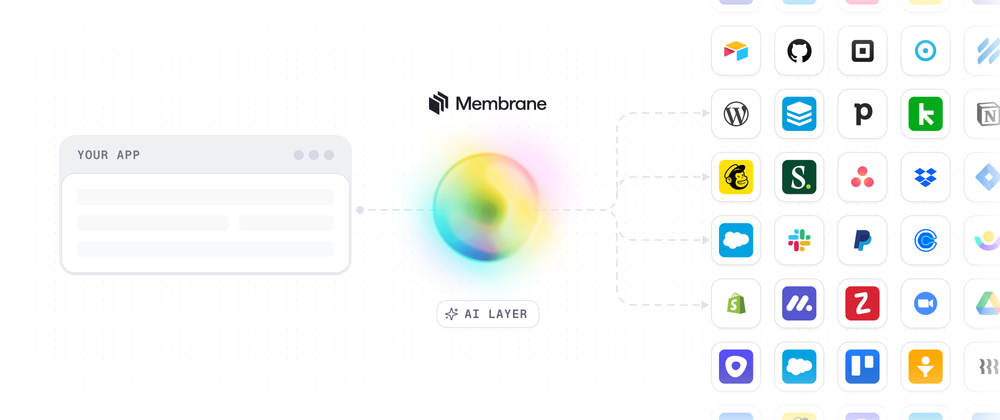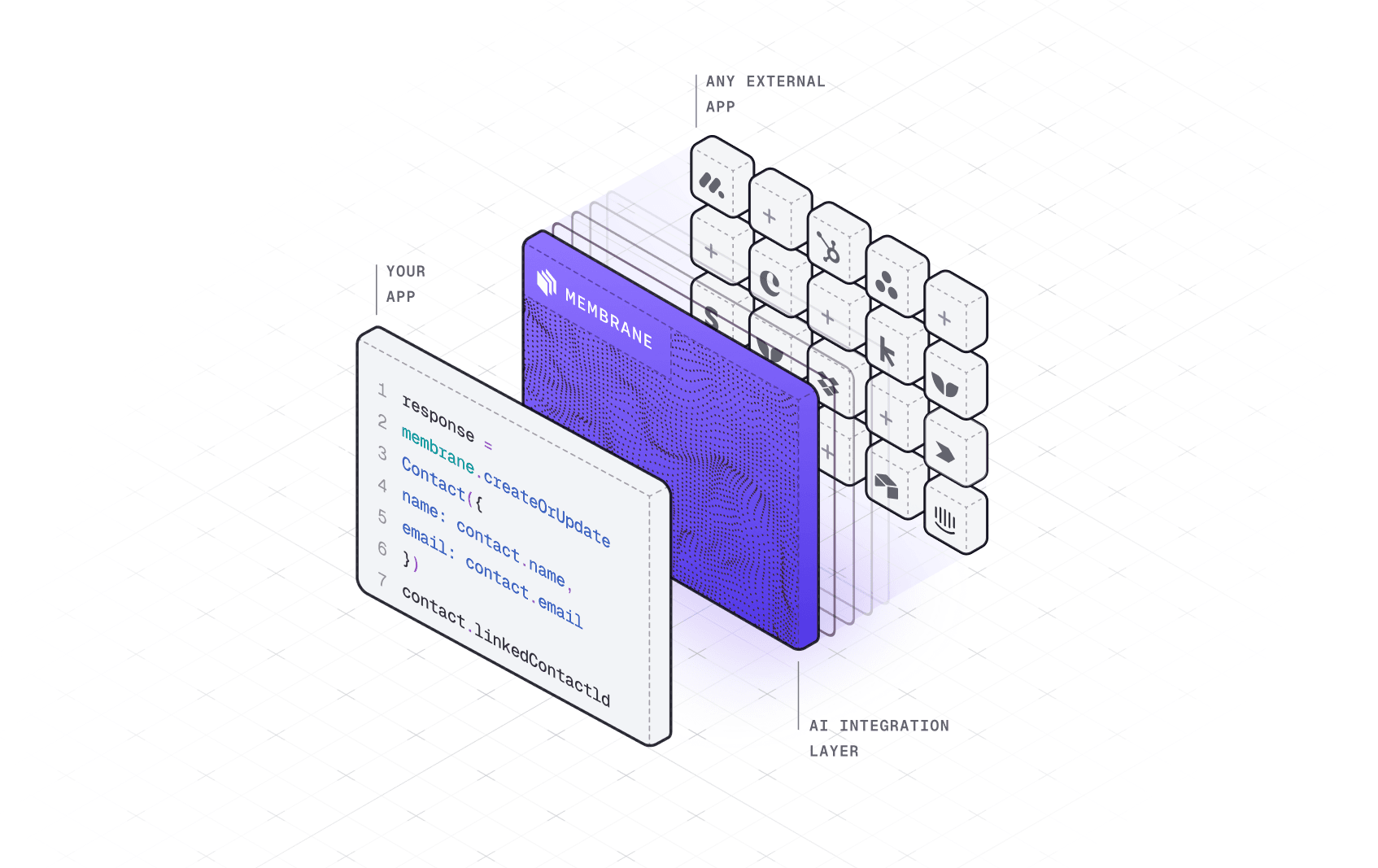
The new system for building customer-facing integrations in the age of AI
The way you’ve built integrations is no longer enough
Before AI, building integrations was a manual, brittle process.
Teams relied on a patchwork of iPaaS tools, custom-coded connectors, and outsourced agencies — each integration scoped and built one app at a time. The process was slow, repetitive, and operationally expensive:
- Read the docs
- Write API wrappers
- Map fields
- Handle auth
- Fix breakages across customer environments
That worked — barely — when you only needed a few integrations. But today, customers expect your product to connect to whatever stack they already use. Not just five tools. Not just major CRMs. Every tool in their workflow.
And as usage scales, so does variation: different schemas, edge cases, and customer-specific logic. The old model — one integration at a time — just can’t keep up.
To solve this in the last 5 years, many teams adopted embedded iPaaS platforms or unified APIs. While they abstracted away some of the grunt work, they introduced limitations of their own:
- Embedded iPaaS platforms still rely on rigid workflows and visual builders that struggle with edge cases and versioning.
- Unified APIs oversimplify real-world differences — they reduce surface area, but also reduce flexibility, locking you into the lowest common denominator.
- Neither gives you control over logic reuse, dynamic per-customer variations, or runtime orchestration.
- And neither was built to handle a world where AI agents can be part of the integration building process
AI is changing the integration process — not just accelerating it
AI isn’t just a productivity tool for engineers. It changes the underlying assumptions about how integrations are created and maintained:
- It can help generate app- and customer-specific variants of core use cases
- It can adapt existing logic to new schemas or APIs
- It can debug issues or propose updates when things break

But to unlock this, your system needs to be structured in a way that AI can participate meaningfully in the integration lifecycle — not just generate snippets of code.
You need to move from handcrafted connectors to reusable, composable logic that AI can help you scale.
What you need: a system for scalable integrations
If you want to support dozens (or hundreds) of integrations without growing your team linearly, you need a new kind of architecture. One built on the following principles:
1. Separate business logic from app-specific implementation
Model the intent behind an integration (e.g., “create task”) separately from how it’s executed in Asana, Jira, or Linear.
2. Create reusable interfaces for common use cases
Design for patterns like “sync contacts,” “log events,” or “export leads” — not for specific tools.
3. Dynamically generate per-app and per-customer implementations
Let AI assist in adapting your logic to specific customer environments: auth methods, schemas, edge cases.
4. Support runtime execution, observability, and version control
Integrations are not static assets — they need to be debuggable, testable, and upgradable in real time.
5. Make logic accessible to both humans and AI agents
Expose integrations via APIs and standards (like MCP) so they can be triggered by people or autonomous systems alike.
This is what modern, scalable integration architecture looks like: not a collection of connectors, but an intelligent system for managing intent, variation, and execution at scale.
How Membrane enables this shift — so you don’t have to build it yourself
Membrane is a universal layer designed for this new model of building integrations. It helps teams go from managing a few handcrafted integrations to orchestrating hundreds — without exploding complexity or headcount while incorporating AI into the way of shipping, maintaining and scaling integrations.
With Membrane, you can ->

- Define logic once — model the core use case in code
- Use AI to generate app- and customer-specific variants — with full control over mapping, auth, and edge cases
- Expose all logic via APIs — everything is runtime-executable and observable
- Operate at scale — test, deploy, debug, and revise integrations quickly
- Get your AI agent product to integrate with apps — Membrane is MCP-compatible, so AI tools can trigger and adapt integrations directly
The next generation of integration teams will stop building connectors — and start designing systems
Moving to an AI-first integration system isn’t just about adopting new tools — it’s about unlocking a fundamentally better way to scale.
With AI assisting in code generation, schema mapping, and edge case handling, your team can support far more integrations without growing headcount. You go beyond the top 5–10 tools and cover the long tail of customer needs — faster and with less effort. AI-first systems adapt to customer-specific variations dynamically, reducing manual overhead and making it easier to iterate. More importantly, they prepare your infrastructure for what’s next: AI agents triggering workflows, adapting integrations at runtime, and operating against standards like MCP.
By rethinking your integration system around AI from the ground up, you turn what used to be a bottleneck into scalable infrastructure — faster to ship, easier to maintain, and more powerful for both your team and your users.
The good news? you don’t need to reinvent the wheel. With Membrane, you can adopt the architectural shift now — moving from simple connectors to a flexible, intelligent system designed to scale with your team, your customers, and your AI roadmap.
Check out more about Membrane and how it can be used: https://integration.app/membrane